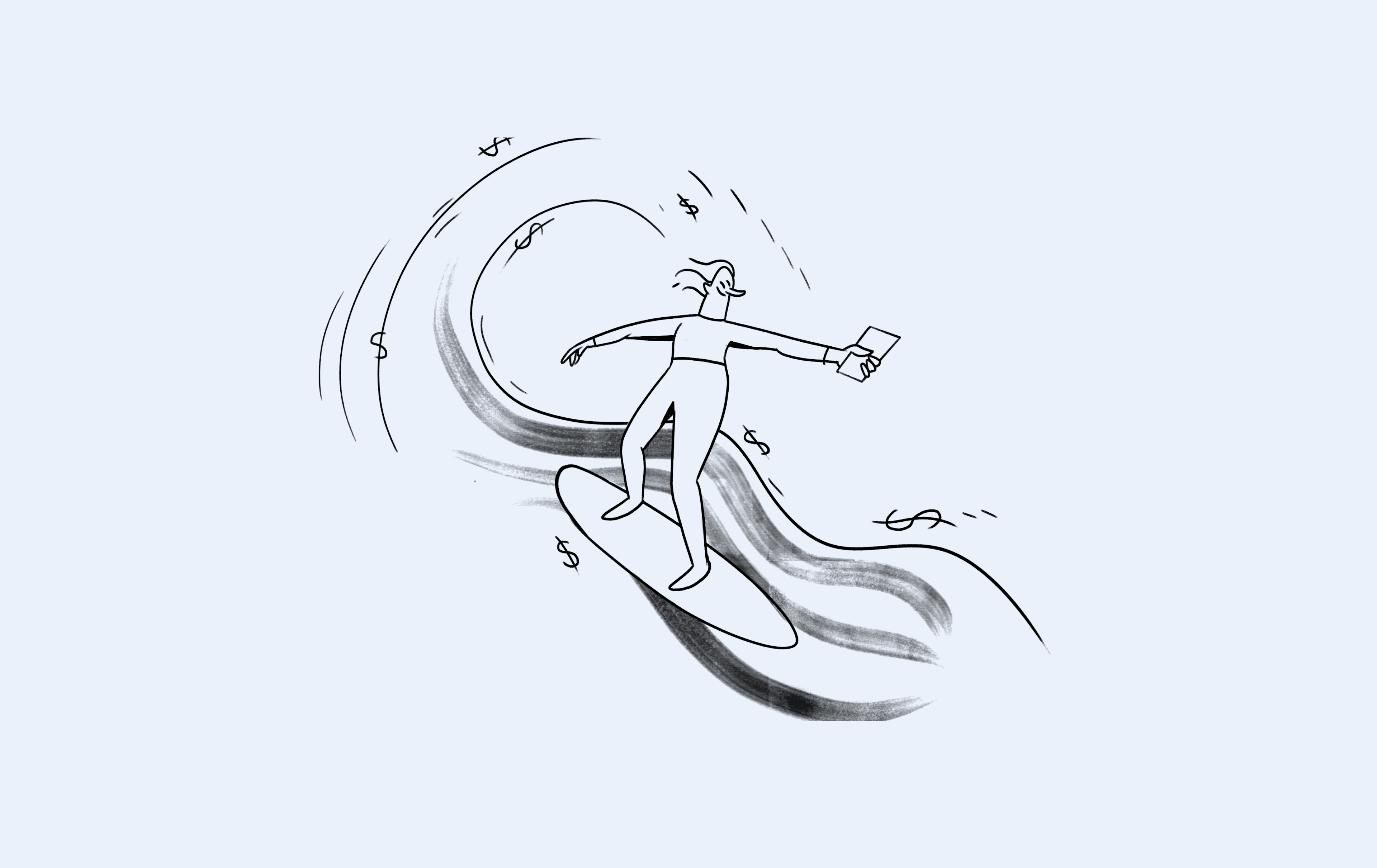What You’ll Learn
- Why businesses use cash flow forecasts and how you can benefit from them
- How to forecast cash flow with common methods and templates
- What invoicing tools like Hopscotch can do to make cash flow forecasting easier
A cash flow forecast is a financial document that projects the amount of cash expected to come into and go out of a business. It helps you understand your future cash position so you can make informed decisions, meet your obligations, and pursue your goals. Understanding how to charge interest on overdue invoices and ensuring compliance with best practices can result in more prompt payments and protect your business’s financial stability.
Benefits of forecasting cash flow for your business
Cash flow forecasting isn’t the same as a budget. It looks at a set time frame to understand where a business’s cash is located. Because it focuses on short-term cash movement (rather than long-term financial expenses, like in budgeting), it comes with unique benefits.
Forecasting can help your business:
- Avoid cash shortages: You can anticipate dips in income or spikes in expenses and funnel your available cash accordingly.
- Plan for growth: With forecasted data, you can base your growth strategies on clear financial projections.
- Strengthen relationships: A transparent understanding of your needs and obligations helps you build trust with both vendors and investors.
- Manage debt payments: By ensuring accurate oversight of your cash flow, you can prioritize and pay down debt more quickly while still meeting other cash needs.
- Predict cash stores for key dates: Understanding your cash stores at key times can help you more easily navigate end-of-year or end-of-quarter plans.
Understanding your money flow can also give you more confidence as you make financial decisions for your business.
How to forecast cash flow
Forecasting cash flow involves gathering key information. First, you’ll want to select a timeframe to analyze, such as a month-long period. Then, you’ll identify these data points:
- Starting cash balance: Whatever is in your accounts at the beginning of the time frame is your starting cash balance.
- Outflows: All outgoing payments are accounted for here, such as rent, payroll, and supplies. Any amount that leaves your accounts is considered an outflow.
- Inflows: Incoming payments are projected as inflows. This can include client invoices or funding investments.
- Closing cash balance: To project your closing cash balance, you subtract all outflows and add all inflows to your starting cash number. This represents your cash at the end of the set time, assuming all expenses go through as expected.
A cash flow template is a great tool if you’re new to forecasting. As you grow more comfortable with the process, you can use your own template, a customized spreadsheet, or more advanced tools.
Never get paid late again with Hopscotch Flow
Methods of cash flow forecasting
Where your data comes from depends on which method of cash flow forecasting you use. Depending on your available goals and resources, you may choose:
- Direct method: Use real-time data from your bank statements or invoicing records. This offers you short-term insights and higher accuracy.
- Indirect method: Rely on historical data, business trends, and market insights. This offers you a more long-term lens to align cash flow with broader financial statements.
- Hybrid models: Combine approaches to suit your business needs. You can leverage short-term insights with long-term context to broaden your understanding.
No matter the forecasting method you use, the more accurate the data you put into it, the more accurate your output will be. Well-documented financial records make cash flow forecasting easier and more helpful.
Cash flow forecast example
What does a cash flow forecast look like in practice? Imagine this scenario for a small agency:
- $10,000 starting cash balance
- $8,000 in outflows—with $2,000 going to rent, $4,500 going to payroll, and $1,500 going to supplies
- $10,500 in inflows—with $1,500 coming from Client A, $4,000 coming from Client B, and $5,000 coming from Client C
Calculating these numbers together gives you a closing cash balance for the month. Here, that number would be a $12,500 projected closing cash balance. These numbers aren’t guaranteed and don’t provide exact answers, but they can help you understand the overall standing of your business.
If you see lower-than-expected cash flow when looking at the future, you can prioritize sales initiatives to bring in more cash. If you notice that particular clients always pay late, you can change how you approach invoicing to create better expectations or communication.
The best way to visualize cash flow is to try a simple forecast with the numbers for your business. As you begin to understand your inflows and outflows, you can fine-tune your data for more accurate projections.
Take control of your cash flow with Hopscotch
Cash flow forecasting isn’t an exact science. You’ll always see variations in incoming and outgoing payments, with late invoices or emergency expenses popping up unexpectedly. When combined with other finance tools, a forecast helps you make informed decisions about your money.
If you want more control over your cash flow, turn to Hopscotch Flow for flexible access to working capital based on your outstanding receivables. Flow gives your business room to plan, pivot, and grow with confidence. Get started with Flow today.
Bret Lawrence
Writer
Bret Lawrence writes about invoicing and cash flow management at Hopscotch. Her previous roles include senior financial writer at Better Mortgage, where she covered lending and the home buying process. Her writing is not financial advice.


